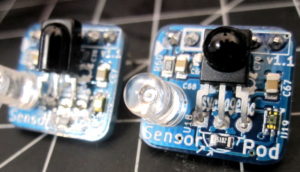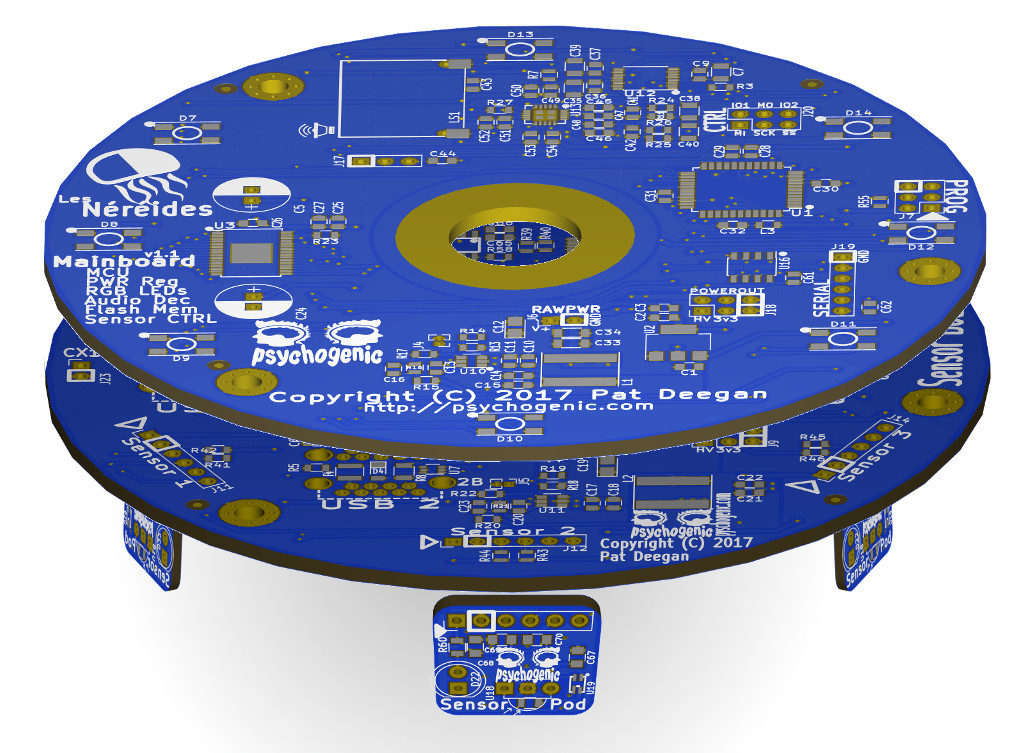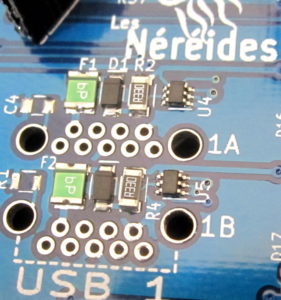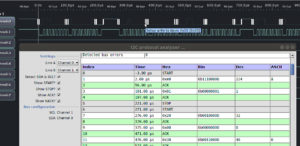The Nereides Project aims to create an interactive multi-sensory device the acts as a multi-port USB charger while providing inter- and intra-active behaviour.
This page will be updated as the project progresses. Last update: 2008-02-04.
Functionality
The systems major functions include:
- USB detection and charging
- Full colour ambiance lighting
- Integrated sound playback
- Touch sensing
- Proximate module sensing (visible and IR light communications).
Architecture
The main challenges involved revolve around the physical constraints imposed on the system. As such, it was designed using three co-operating PCB layouts:
- Main board (power regulation, logic and control);
- Sensor board (charging and sensor management); and
- Sensor pods (remote light detection etc)
These are stacked within the enclosure.
The main board centers around an XMEGA while the sensor board uses a dedicated co-processor (a small ATTiny MCU). On-board communication is SPI and I2C whereas intra-module comms are through visible and infrared light.
Hardware
 A first stage pass involves laying out the circuitry and assembly of prototypes for the various boards. The main and sensor boards both have a diameter of 10cm and a center mounting hole, defining CD-like disk PCBs. In order to communicate with up to 6 sensor pods, which may all host devices with identical I2C addresses, and I2C multiplexer is used.
A first stage pass involves laying out the circuitry and assembly of prototypes for the various boards. The main and sensor boards both have a diameter of 10cm and a center mounting hole, defining CD-like disk PCBs. In order to communicate with up to 6 sensor pods, which may all host devices with identical I2C addresses, and I2C multiplexer is used.
Each USB receptacle provides 2 USB A ports, allowing for simultaneous charging of up to 6 devices.
Security and privacy considerations kept us away from actually using USB communications channels, so presence detection is done through current sensing on each of the USB ports.
 The sensor pod design is flexible in that each pod is access through an independent I2C channel. This implies that we could construct a variety of sensor pods for different uses without requiring modifications to the hosting hardware.
The sensor pod design is flexible in that each pod is access through an independent I2C channel. This implies that we could construct a variety of sensor pods for different uses without requiring modifications to the hosting hardware.
At this point, the sensor pods have, at a minimum, an RGB/light sensor and may optionally possess an IR emitter or receiver.
Current Status
The first pass of each hardware component is currently being assembled and tested. The process mainly involves
- Assembling prototypes
 2. Establishing communications between components
2. Establishing communications between components
and then, finally creating firmware to utilize each subsystem. More details and a video demonstration will be available shortly.




